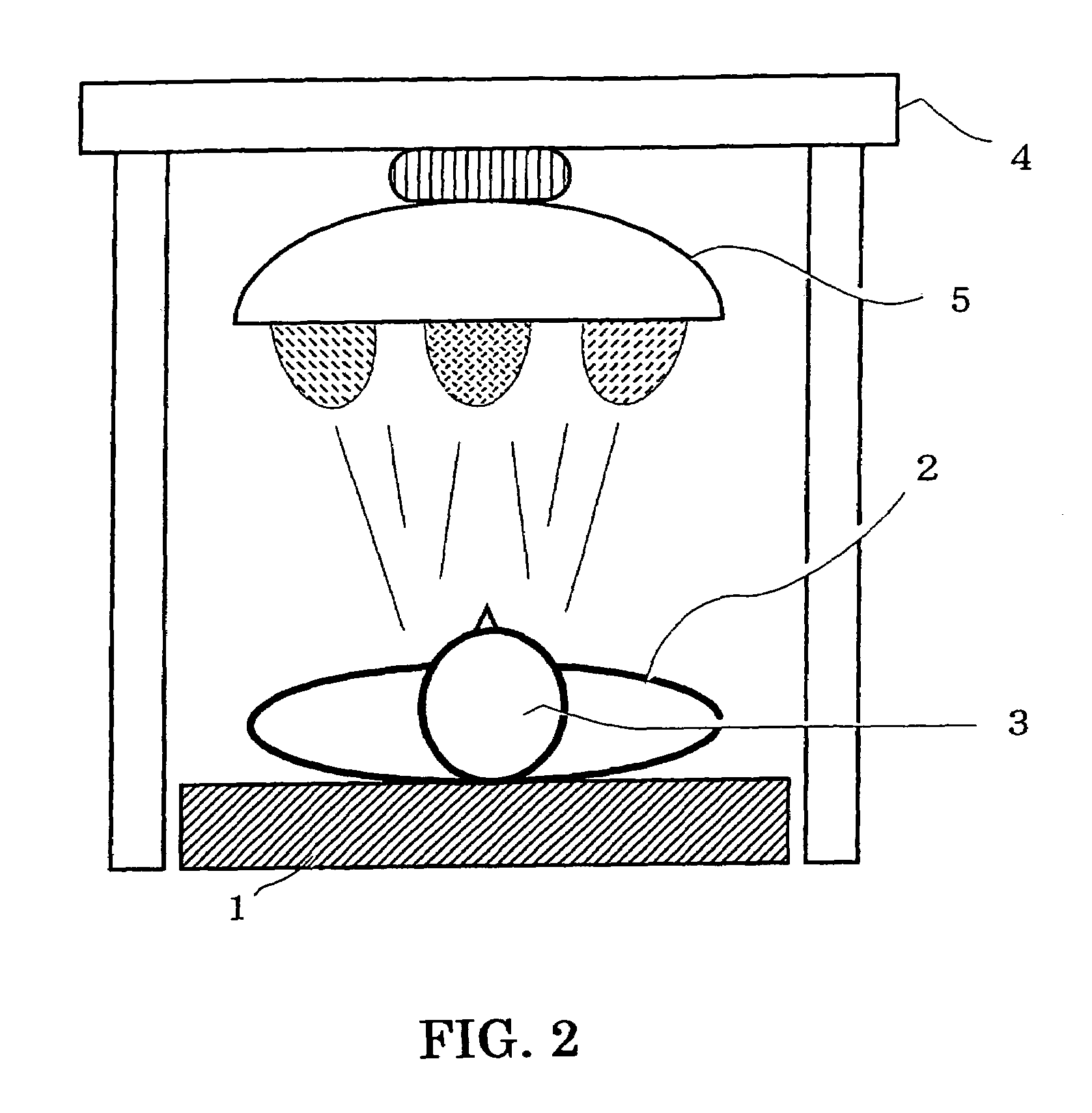Dead human body embalming method
a human body and embalming technology, applied in the field of dead human body embalming, can solve the problems of ineffective processing method, unnatural appearance of the body, and other than the immediate family who attend a funeral service, and may be in danger of contracting an infectious diseas
- Summary
- Abstract
- Description
- Claims
- Application Information
AI Technical Summary
Benefits of technology
Problems solved by technology
Method used
Image
Examples
embodiment 1
[0044]As the photo catalyst embalming solution used for the body embalming method described above, the following solution is effective: a photo catalytic material (product of Asukatec Co., Ltd.), wherein fine grains of a transient precious metal element, especially silver, are held suspended in a titanium dioxide (TiO2) solution. Since the diameter of the fine grains of silver that are suspended in the titanium dioxide (TiO2) solution is about 100 nm, these grains can easily be distributed to and pass through capillaries in the dermis.
[0045]FIG. 3 is a graph showing the correlation between how easily the photo catalyst embalming solution can pass through capillaries (curve with added circles) and the satisfaction level (curve with added rhombi) attained by the induced photo catalytic activity, while the horizontal axis represents the density of the photo catalytic element in the photo catalyst embalming solution. The passage level illustrated for the capillaries (curve with added ci...
embodiment 2
[0046]Tables 1 and 2 show relationships between ultraviolet (UV) irradiation volume and change periods at a photo catalytic material (product of Asukatec Co., Ltd.) density of 0.5% and at a photo catalytic material density of 5%. The evaluations in these tables of the decoloration effects relative to bilirubin color are categorized as follows.
0: no effects
1: thinner than the original bilirubin color
2: obviously thinner
3: obviously thinner; but still identifiable as a bilirubin color
4: decolorized and barely identifiable as a bilirubin color
X: only a tan color produced by ultraviolet light identified
[Table 1]
[Table 2]
[0047]In tables 1 and 2, 0 to 2, which indicate that the decolorization effects are regarded as unsatisfactory, are entered in shaded portions. Entered in white portions are evaluations “3” and “4”, which indicate that satisfactory effects were obtained, and these are regarded as effective ranges. Further, a state wherein the decoloration effects are satisfactory but it ...
PUM
 Login to View More
Login to View More Abstract
Description
Claims
Application Information
 Login to View More
Login to View More - R&D
- Intellectual Property
- Life Sciences
- Materials
- Tech Scout
- Unparalleled Data Quality
- Higher Quality Content
- 60% Fewer Hallucinations
Browse by: Latest US Patents, China's latest patents, Technical Efficacy Thesaurus, Application Domain, Technology Topic, Popular Technical Reports.
© 2025 PatSnap. All rights reserved.Legal|Privacy policy|Modern Slavery Act Transparency Statement|Sitemap|About US| Contact US: help@patsnap.com



